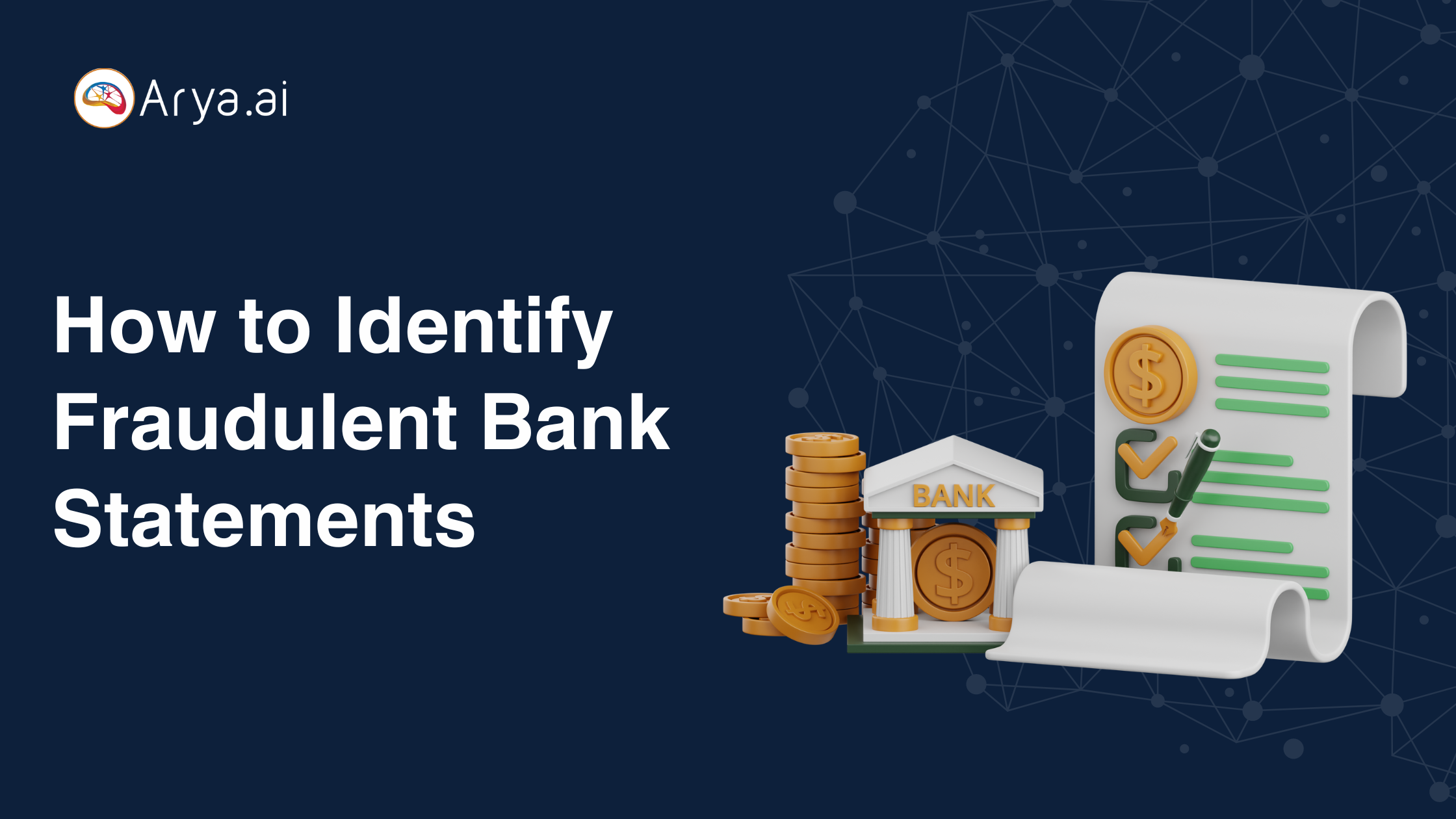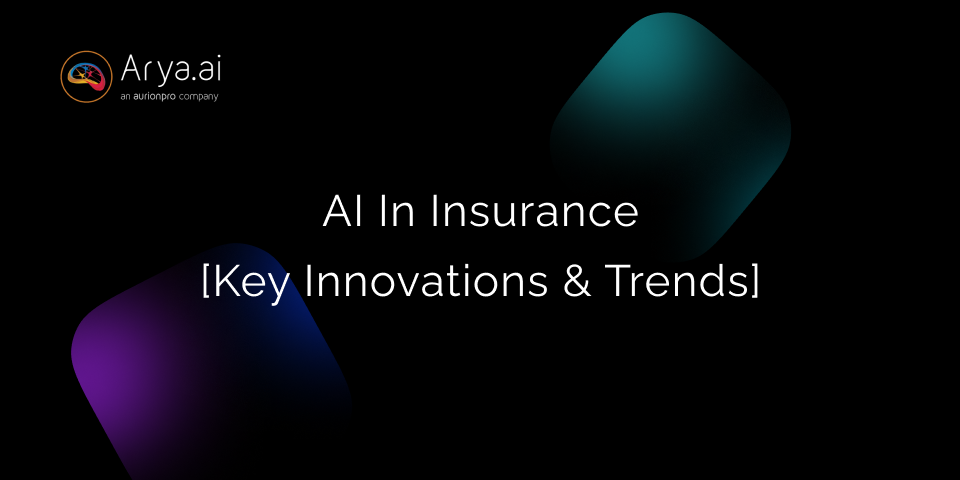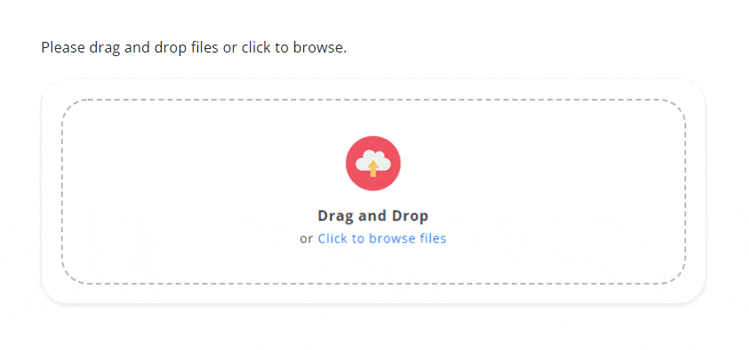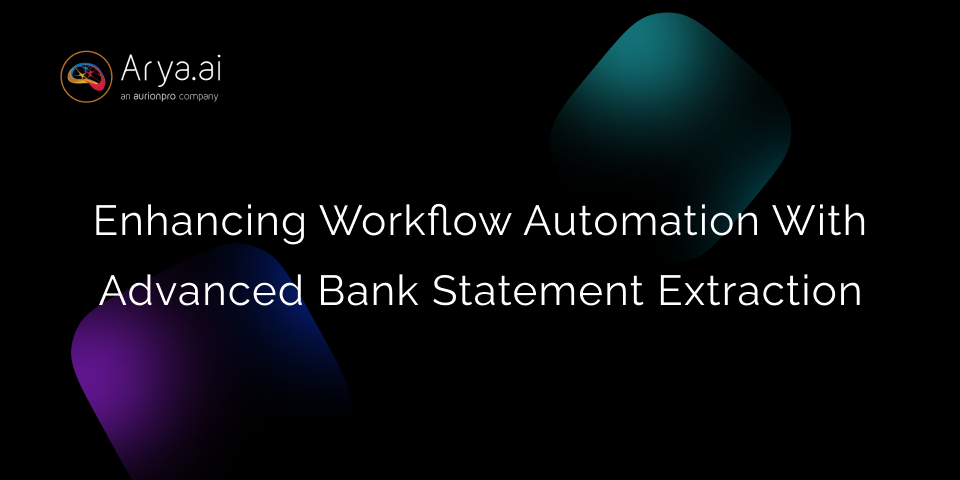We are now in the era of automation. Industries worldwide are betting on technologies that automate various business processes, tasks, and workflows with little to no human intervention. In fact, the workflow automation market for all industries is predicted to be worth $77.8 Billion by 2030.
The BFSI sector, in particular, has seen a giant leap towards automation, driven by the need to handle vast amounts of data as soon as it arrives without any loss in accuracy.
One area where automation can yield substantial benefits is in bank statement extraction. Traditionally, the process of extracting data from bank statements has been labor-intensive, vulnerable to errors, and time-consuming. However, advancements in Artificial Intelligence (AI) and Machine Learning (ML) have revolutionized this domain.
Bank statement extraction allows organizations to convert unstructured data from bank statements into structured, actionable insights with remarkable accuracy. Combining bank statement extraction with workflow automation offers even greater benefits. This integration improves operational efficiency, data accuracy, and compliance.
This post details everything you need to know about bank statement extraction and the benefits and challenges of integrating it into automated workflows.
Understanding Bank Statement Extraction
Bank statement extraction is the conversion of unstructured data from bank statements into structured, usable formats using advanced technologies like Optical Character Recognition (OCR), Machine Learning (ML), and Natural Language Processing (NLP).
This extraction process helps financial institutions to automate reading, interpreting, and data entry associated with bank statements, thus transforming these manual and error-prone operations into efficient, automated workflows.
Bank Extract is the bank transaction data extracted from bank statements and is typically found in a structured, machine-readable format like CSV or XLS.
Bank Statement Extraction Process
While different bank statement extractor tools have proprietary processes, the steps usually involve the following:
- Data Ingestion: Bank statements, whether in digital (PDF, scanned images) or physical form, are uploaded into the software.
- Optical Character Recognition (OCR): OCR technology scans the bank statements to convert text (printed or handwritten) in PDFs and images into machine-encoded text.
- Data Classification: The extracted text is parsed to find and categorize different data points like transaction dates, amounts, descriptions, and balances. Intelligent Document Processing (IDP) with NLP algorithms can improve this process by understanding the context and semantics of the text.
- Validation and Error Checking: Automated validation checks ensure the accuracy and consistency of the extracted data. The system flags any discrepancies or uncertainties for manual review.
- Data Export and Integration: The structured data (in CSV or XLS format) is then exported to relevant systems (e.g. ERP, CRM, or accounting software) for further processing and analysis.
What are the Benefits of Bank Statement Extraction?
Bank statement extraction, especially when integrated into workflow automation, offers numerous advantages for banks and financial institutions. Here are some key benefits:
- Increased Accuracy and Reduced Manual Errors
Manual data entry is inherently prone to errors. Bank statement extraction, powered by AI technologies, significantly reduces these errors by automating the data capture process. A study by McKinsey found that automation can drop manual data entry errors by up to 90%.
- Time Savings and Operational Efficiency
Manual data extraction, which used to take hours, can now be accomplished in minutes with bank statement extraction tools, speeding up back-office operations and freeing up valuable human resources.
- Enhanced Data Accessibility and Analysis
As bank extract data is structured, it is readily accessible for analytical tools. Banks can quickly generate reports, do trend analysis, and derive actionable insights from the data. Fake bank statements are also a significant concern in the banking industry. AI can help eliminate fraudulent transactions and spot fake bank statements, reducing errors.

While bank statement extraction is a real win for banks as it saves time and reduces errors, this is a foundational step that facilitates deeper integration with workflow automation systems.
What is Workflow Automation?
Workflow automation refers to the design, execution, and automation of processes based on pre-defined business rules where manual tasks, data, or files are routed between people or systems according to these rules.
In simple words, workflow automation is organizing and automating tasks so that data or files move between people or systems automatically.
In the BFSI sector, workflow automation spans a range of activities, from customer onboarding and loan processing to compliance checks and fraud detection.
These activities are automated with the help of technologies like Robotic Process Automation (RPA), AI, and ML. They perform repetitive tasks, manage data, and facilitate decision-making processes with minimal human input. Workflow automation systems can trigger actions, send notifications, and transfer data seamlessly between disparate systems. This makes business workflows efficient, consistent, and error-free.
What are the Processes Involved in Workflow Automation?
Workflow automation involves a series of processes designed to streamline and optimize business operations. These processes ensure tasks are completed efficiently, accurately, and consistently, enhancing overall productivity and reducing manual effort.
1. Process Mapping and Design:
Finding and outlining the workflow processes that can be automated, including defining tasks, decision points, and responsible parties.
2. Automation Tools and Technologies:
Implementing software solutions like RPA, AI, and ML to automate tasks. These can be simple rule-based systems or complex algorithms capable of making decisions.
3. Integration with Existing Systems:
Integrating automation tools with current software systems (e.g., ERP, CRM, core banking systems) to enable data flow and interoperability.
4. Monitoring and Optimization:
Continuously monitoring the automated workflows to find issues and areas for improvement. Optimization may include adapting rules, updating software, or refining processes.
How to Integrate Bank Statement Extraction into Automated Workflows?
Irrespective of your industry, you can use the following steps to integrate bank statement extraction tools along with workflow automation:
Assessing Current Workflows and Finding Automation Opportunities
The first step is to assess your current processes thoroughly. You can map out each step of your workflow to find repetitive and time-consuming tasks that are also prone to errors.
While doing the assessment, you need to consider the following:
- Volume and frequency of bank statements processed.
- Current time and resources spent on manual data entry.
- Error rates and compliance issues related to manual processing.
This detailed workflow analysis will highlight the specific pain points that you can remove with bank statement extraction and automation.
Choosing the Right Bank Extraction Tools and Technologies
The choice of bank extraction tool will depend on the complexity of your bank statements, the accuracy required, and your existing technological infrastructure.
A rule of thumb is to find the tool that combines advanced technologies like NLP, ML, OCR, and IDP. Of course, it has to have easy API integration with your systems as well. Arya AI's bank statement extractor tool excels in these areas, making it the best choice for your business.
Integration with Existing Systems (ERP, CRM, etc.)
The final step is to integrate the chosen extraction tools with your existing systems, such as ERP, CRM, or accounting software.
Use the steps below to make sure that the extracted data flows smoothly into your automated workflows without disrupting current operations:
- Establish API connections to enable real-time data exchange and updates between the extraction tool and your ERP, CRM, or other relevant software.
- Align the extracted data fields with the corresponding fields in your existing systems.
- Before going live, perform extensive testing to identify and resolve any integration issues.
- Enable the Bank Statement Processing API.
- Access and configure Document Types.
- Review and approve extracted data.
- Continuously validate the data after it’s entered into your system.
Integrating Arya AI Solutions
Arya AI makes integration with existing systems seamless and efficient. The apps are designed with interoperability, ensuring they can easily connect with your current ERP, CRM, and accounting software.
By choosing Arya Apps, you can streamline your data extraction and integration processes, enhancing efficiency and ensuring that your automated workflows operate without interruption.
Example: Loan Processing Workflow With Bank Statement Extraction
Bank statement extraction enhances loan processing by using AI, NLP, Advanced OCR, & Intelligent Document Processing (IDP). The process begins with uploading bank statements, followed by AI-driven data parsing to extract and categorize transaction data.
Automated validation checks ensure accuracy, while AI and fraud detection tools find anomalies and potential fraud. This structured data gives deeper insights for financial analysis, streamlining the underwriting process and helping in decision-making. Accurate data accelerates approvals and improves communication with borrowers.
Industries Benefiting from Bank Statement Extraction and Workflow Automation
1. Financial Services
Banks, credit unions, and lending institutions can streamline loan processing, improve fraud detection, and give better customer service by analyzing financial data efficiently. Investment firms such as hedge funds and private equity firms can use bank extracts and workflow automation to evaluate financial health and monitor spending trends, enabling customized banking solutions.
2. Insurance
Insurance companies can speed up claims processing and risk assessment with automation. They ensure accurate financial evaluations, assess risk, calculate premiums, and verify claims to detect fraud.

3. Real Estate
Real estate firms and mortgage brokers can use automated bank statement extraction to verify income and financial stability, expediting the mortgage approval process. Workflow automation also improves property and transaction management.
4. Accounting and Auditing
Accounting firms and auditors can reduce errors and save time on financial reviews and audits by automating data extraction. Automation also helps manage client financial data, reconcile bank statements, track income and expenses, and identify unusual transactions.
5. E-commerce
E-commerce businesses use automated financial data analysis to manage cash flow, detect fraudulent transactions, and improve financial planning and reporting. The technology also helps assess customer creditworthiness and prevent fraud.
6. Healthcare
Healthcare providers and medical billing companies can streamline patient billing, manage payments, and ensure compliance with financial regulations through automated bank statement extraction. Workflow automation enhances patient registration, appointment scheduling, and medication management.
How Arya AI's Bank Statement Analyzer Helps with Workflow Automation?
Financial institutions need a quick, accurate analysis of several months' bank statements to get a clear financial picture. Our Bank Statement Analyser tool reads transactions from any bank statement and converts that data into comprehensive reports.

Arya AI's Bank Statement Analyser App helps automate financial analysis workflows in several key ways:
- Automated data extraction: The App can effectively "read" bank statements in various formats, extract transactions, and other information, and convert raw data into a comprehensive analytical report. This minimizes manual data entry and reduces errors.
- Supports multiple bank statement formats: The App supports bank statements from major banks across different regions and formats. This allows for a standardized analysis process without manual data wrangling.
- Anomaly detection and fraud checks: The API performs anomaly detection and rule violation checks to help identify potentially fraudulent transactions, enhance risk assessment, flag financial behavior, and improve credit decisions.
- Seamless integration: The App can be easily integrated into existing lending systems to provide a 360-degree view of the applicant's financial history, including income, average balance, commitments, transaction patterns, and spending habits. This enables quick and efficient credit decisions.
Conclusion
Bank statement extraction and workflow automation are ground-breaking for the BFSI sector. With the power of advanced AI and ML technologies, financial institutions can transform cumbersome, error-prone processes into streamlined, efficient operations.
Embracing automation allows for substantial time savings, better accuracy, and operational efficiency. As more organizations add these technologies into their workflows, they will be better positioned to handle large volumes of data, maintain compliance, and give superior service to their customers. The future of financial data management is already here, and organizations that adopt these innovations will lead the way in this increasingly competitive landscape.
Try Arya AI’s Bank Statement Analyser and revolutionize your workflow.



